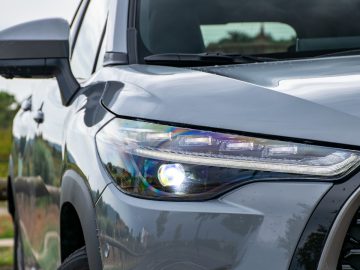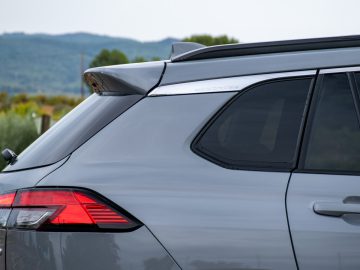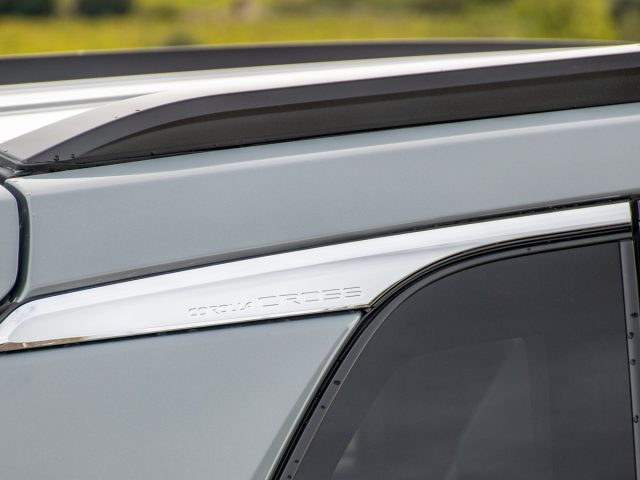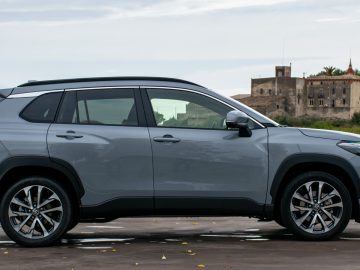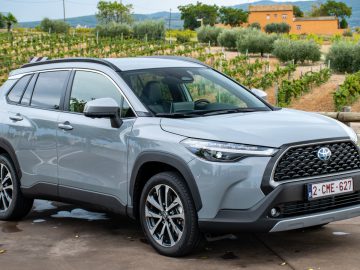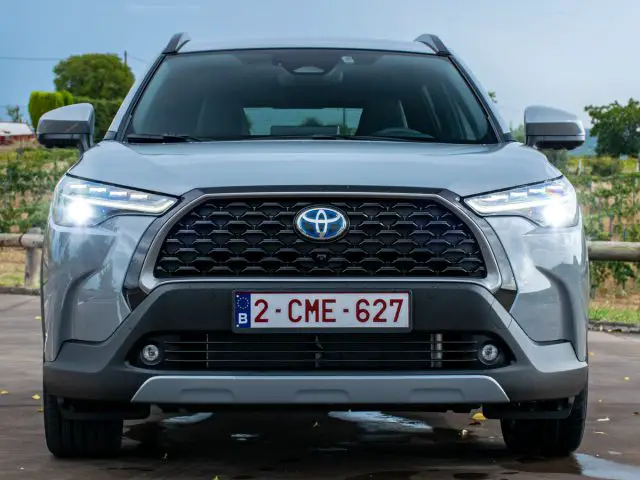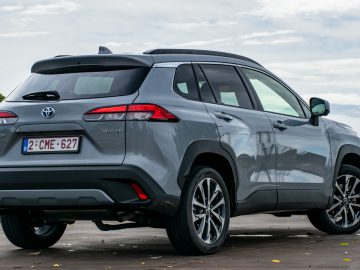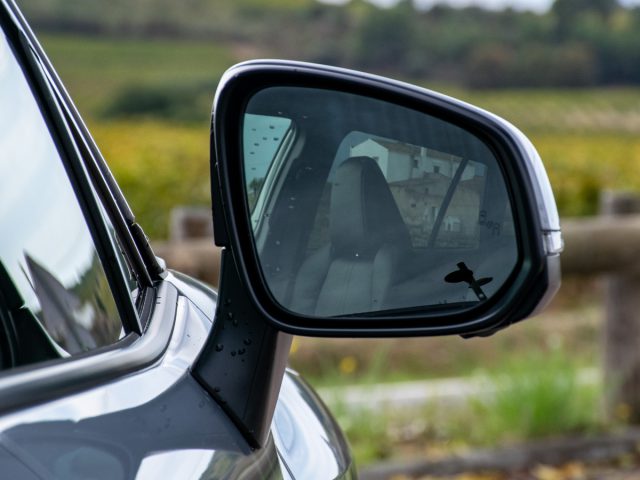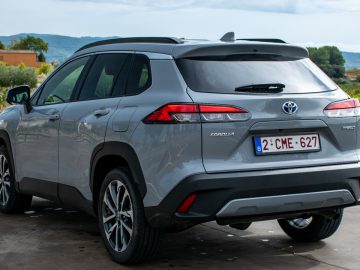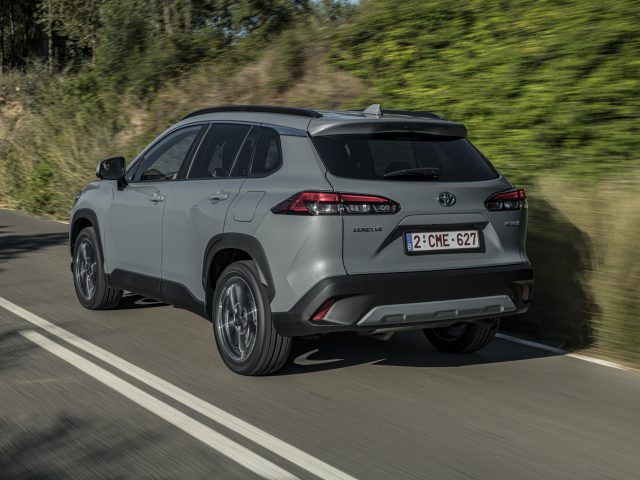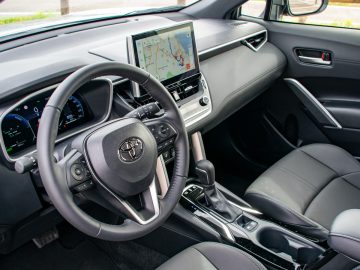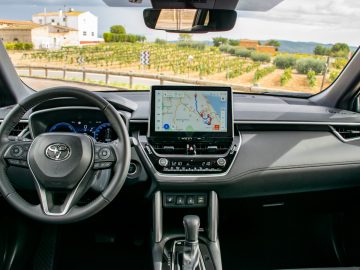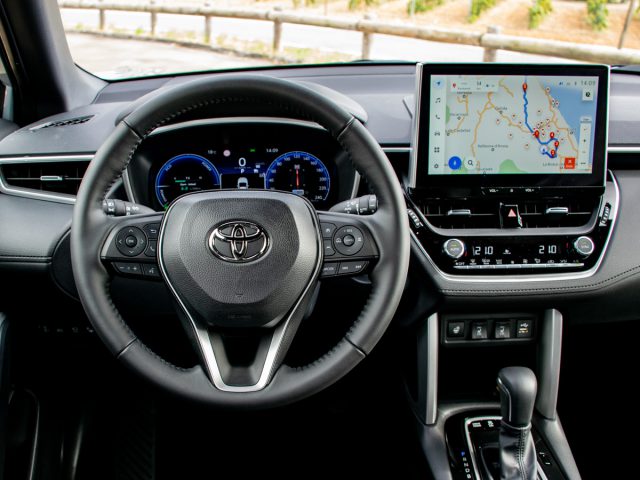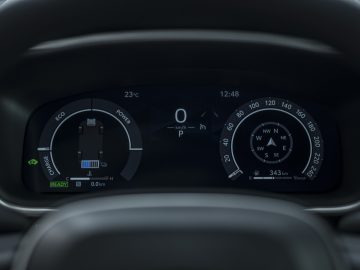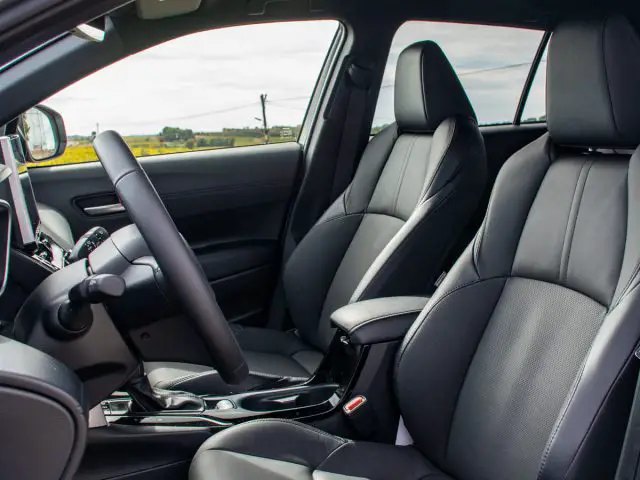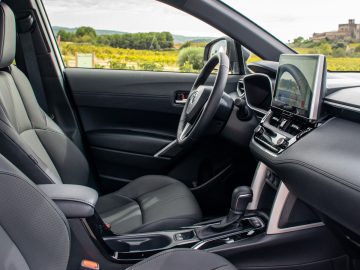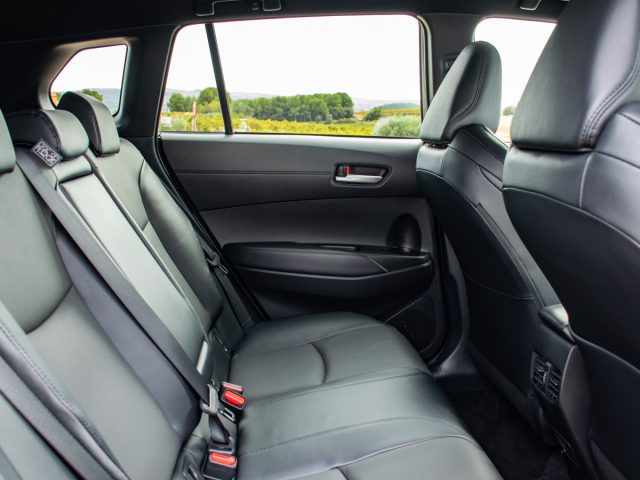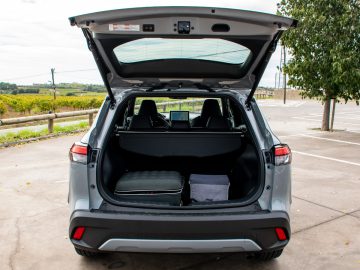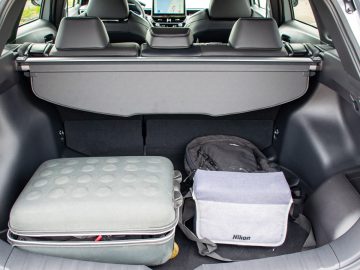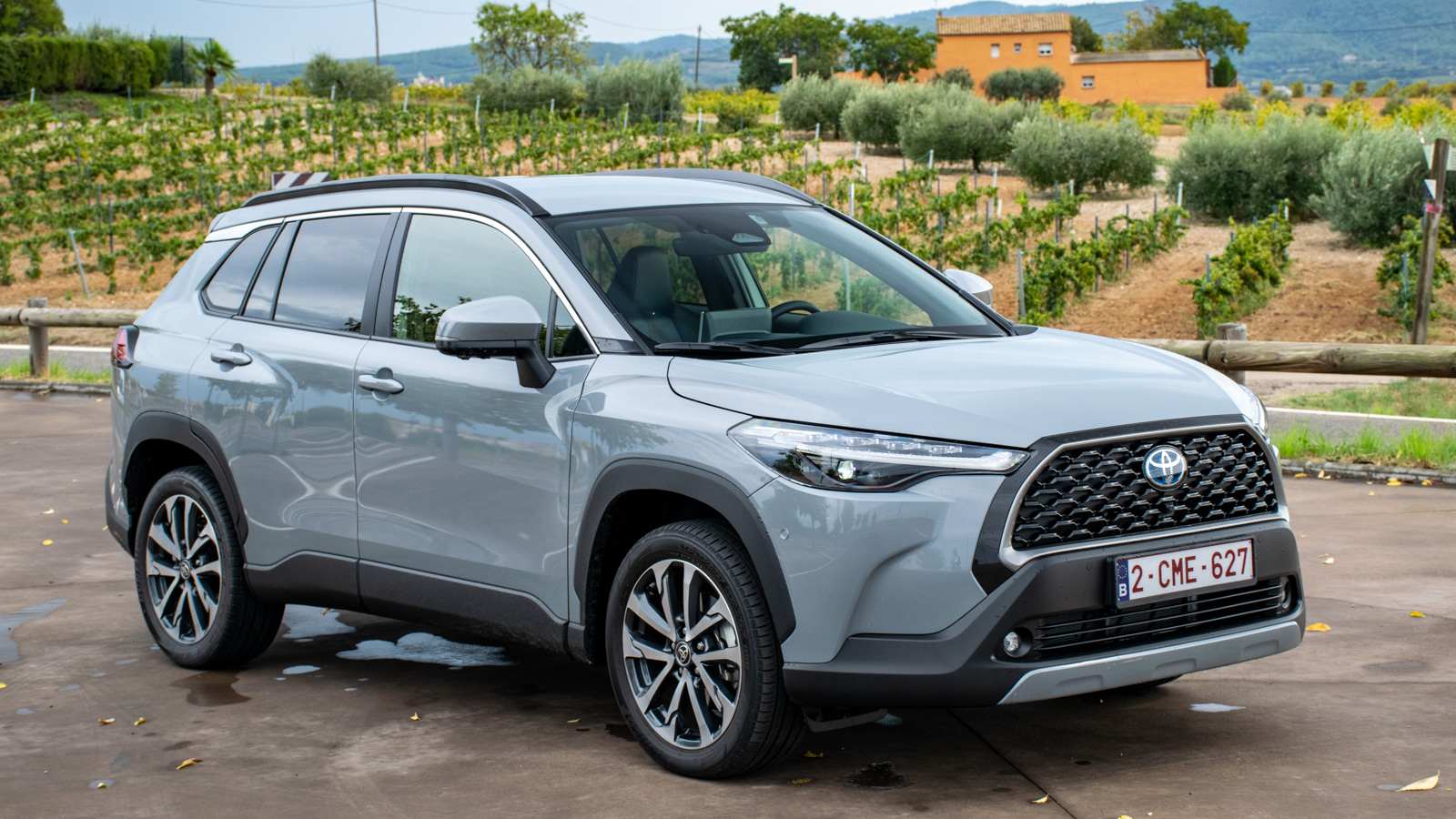Review – Toyota Corolla Cross
Play along
If there is currently one part of the market in automotive land in which you must have a model as a manufacturer, it is the C-segment SUV. Nissan was there early in 2004 with the introduction of the Qashqai, then many competitors followed. Toyota, of course, has long had the RAV4, but it made the leap to a higher class over the years. Meanwhile, Toyota saw that the SUV was gaining considerable market share in this segment over the traditional compact midsize. That growing market demand created room at Toyota for a new SUV alongside the C-HR and below the RAV4. That’s the Corolla Cross.
Own face for Toyota Corolla Cross
Although the Toyota Corolla Cross bears the Corolla name on its trunk lid, its appearance has quite little to do with the current Corolla. The Corolla Cross truly has a face of its own. This is to be commended in a market where the different models of some brands are still barely distinguishable from each other. In fact, Toyota is building the Corolla Cross with two different noses. The version that the brand carries in Japan has the grille sitting a lot lower than the Corolla Cross that Toyota supplies in the rest of the world.

The wheelbase of the Corolla Cross is exactly the same as that of the C-HR and the hatchback version of the Corolla: 2640 mm. However, the Corolla Cross is 15 centimeters longer than its quirky brother. The silhouette is obviously quite different. The roofline of the Corolla Cross extends a lot further back than in the C-HR, and the shape of the side windows is reminiscent of that of the RAV4. That larger window area and more conventional roofline has the pleasing side effect that visibility all around is a lot better than in the C-HR. The quite substantial side mirrors further contribute to the good overview.
Other than that, the Corolla Cross’s appearance is hardly shocking. The large grille and wide LED headlights give the SUV a tough front, and black plastic around the fenders and at the bottom of the front and rear bumper should give the car an adventurous look. Our test car further sits on wheel arch-filling 18-inch alloy wheels and wears the color “Stone Grey Metallic. Those wheels don’t detract from comfort, by the way, but more on that later.
Luggage compartment and rear seat Toyota Corolla Cross
Toyota is positioning the Corolla Cross as a practical alternative to the C-HR. Therefore, for a change, we start not at the front, but at the back. First of all, there is more space for your luggage. In the Corolla Cross, you have 555 liters of trunk space at your disposal, while the C-HR has to make do with 443 liters. Still, a hefty travel case extra to take with you. If you fold down the split-folding rear seat, you can carry up to 1,337 liters of luggage.
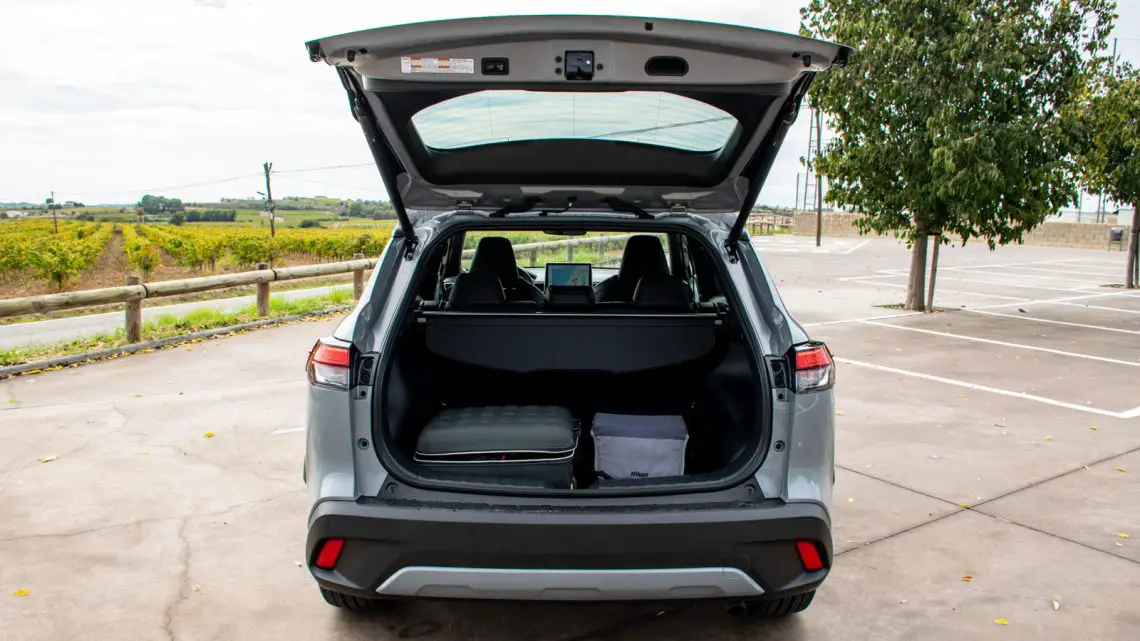
Rear-seat occupants get much more headroom in the Corolla Cross than in the C-HR. In terms of legroom, the two models are similar due to their identical wheelbases. Yours truly, with his height of 1.83 meters, can sit behind himself just fine, so the space in the back seat is good for this segment. The rear seat is also comfortable and provides adequate support for the upper legs.
Furthermore, occupants in the rear have two private air vents and two USB C ports at their disposal. For drinks, the Corolla Cross also offers plenty of room: the center armrest has room for two cups, but each rear door can also hold a nice sized bottle.

Toyota Corolla Cross vs. Corolla Touring Sports
Since the Corolla Cross bears the name “Corolla,” we also put it next to the Corolla Touring Sports. Then the Cross has to give up some trunk space anyway. In fact, in the Touring Sports you can carry 598 liters of luggage and have a 6 cm longer wheelbase, giving you a little more room lengthwise. The Corolla Cross makes up for that difference in height. The seating position in the back seat is also not as good in the Corolla TS, as the bench in the station wagon is lower in relation to the floor. So you are folded up faster with your knees.
Digitization
The interior of the Corolla Cross differs from the other Corollas a lot less radically in design than the exterior. The Corolla’s partially analog instrument cluster clears the field for a 12.3-inch all-digital one. That digital instrument cluster can display various data from the on-board computer, but the layout is fixed. So it is not possible to replace the speedometer and “tachometer” à la Virtual Cockpit of the Volkswagen Group for one large navigation map.
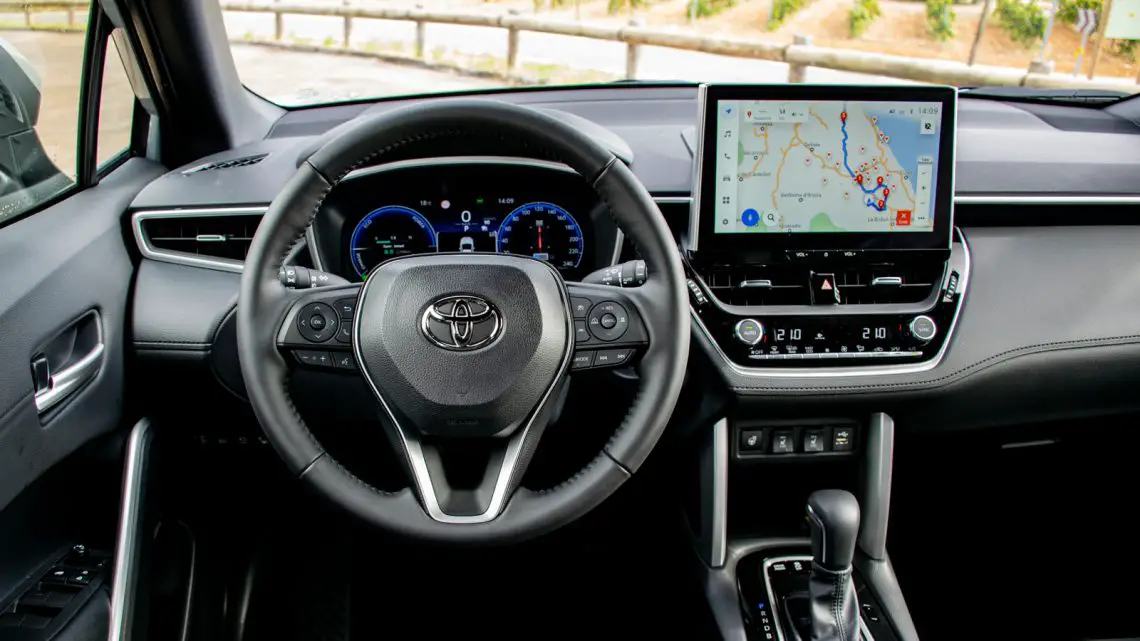
In addition to the digital instrument cluster, the 10.5-inch touchscreen that towers above the dashboard is not to be missed. That system is already familiar from the Yaris and the C-HR and no longer has physical buttons for the various menus. The Toyota Smart Connect running on it works quickly, and wireless connectivity from Apple CarPlay and Android Auto is also among its features.
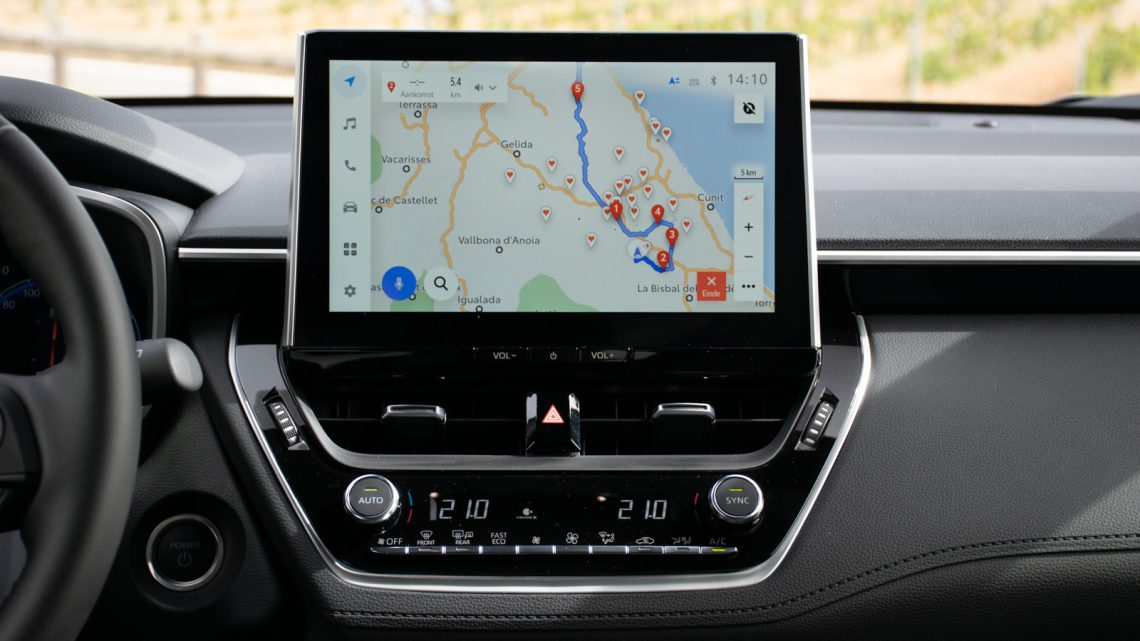
As icing on the cake, the system supports over-the-air updates and various vehicle data can be viewed remotely via the MyT app. On top of that, the Smart Connect Pack lets you unlock your car, open the windows and activate climate control via the app. On the more expensive versions of the Corolla Cross, it is even possible to turn on the steering wheel and seat heaters that way. Speaking of the climate control, it is to be commended that Toyota still has physical buttons for its ease of operation.
Powerful efficiency
Behind the wheel of the Corolla Cross, a pleasant seating position is quickly found. Unfortunately, the seat is not extendable, but the power-adjustable driver’s seat can be adjusted eight ways, and the steering wheel is easy to pull toward you.
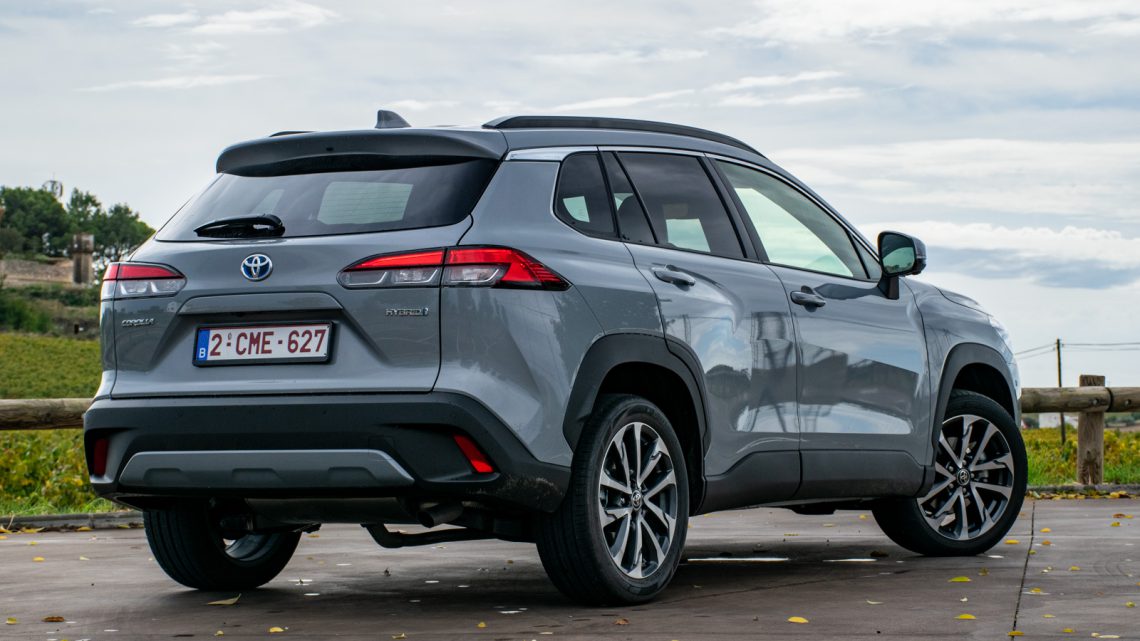
Before we drive, let’s take a quick look at the powertrain: this is, in fact, the fifth generation of Toyota’s hybrid technology and a further development of the powertrain found in the current Corolla. In particular, Toyota improved the lithium-ion battery: it is now 14 percent lighter than before, while delivering 14 percent more output. The system also has a new Power Control Unit resulting in 6 percent less electricity loss. So the powertrain has become another bit more efficient. A power increase from 184 hp to 197 hp is a nice touch for the 2.0 “High Power Hybrid.
In balance
Like the C-HR, among others, the Corolla Cross is on the TNGA-C platform. That base is reputed to be relatively dynamic, and that is certainly the case with the Corolla Cross. The suspension offers a nice mix between comfort and sportiness. Short and long bumps are handled well, but the suspension and damping do not filter out everything. As a result, you still keep a feel for what is going on under the car.
Toyota’s route took in some beautiful mountain roads around Barcelona. Not the natural habitat of an SUV, but the Corolla Cross did not let itself be fooled. When cornering, the suspension stays very nicely flat and you actually always have power to spare. In doing so, you clearly notice that Toyota has done some tinkering with the throttle response. Even with a fairly small input of the gas pedal, you get along with traffic pretty smoothly. This contributes to a relaxing driving experience.
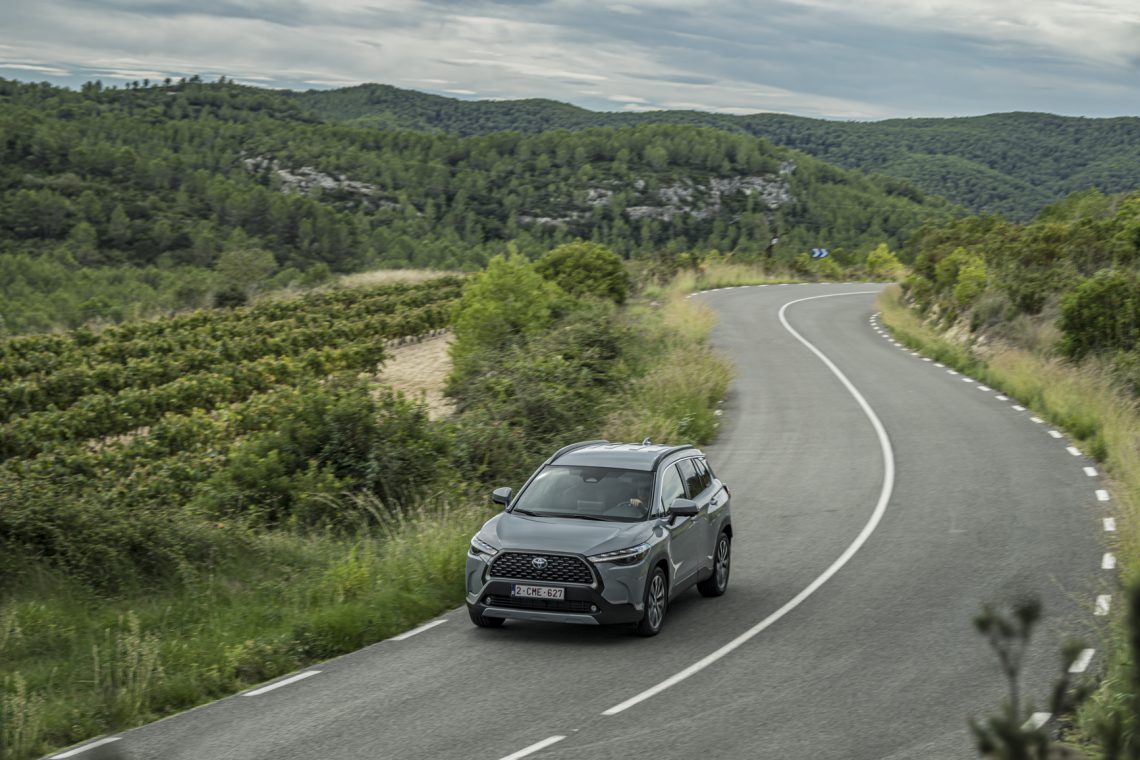
On the highway, by the way, you no longer have to do much at all as a driver, because with adaptive cruise control and Lane Trace Assist, the Corolla Cross can independently stay within its lane and anticipate other traffic. Toyota refined those driver assistance systems for the Corolla Cross, and it’s well reflected in the systems’ operation. Our advice, however, is to turn off Lane Trace Assist on B roads, as the system sometimes redirects unnecessarily there. Fortunately, you can easily turn the system on and off with a button on the steering wheel.
Unconsciously economical
What also creates a sense of calm aboard the Corolla Cross is the fact that on the highway, the engine now revs about 500 rpm less than before. You can hardly hear the combustion engine at work. Switching from the electric motor to the internal combustion engine is also almost seamless, so that sometimes you can tell only by the EV light on the dashboard or the trip computer that you are traveling electrically. From that, you really notice that Toyota has now mastered this hybrid technology to perfection.

The latter is reflected in consumption. There was no time for an extensive consumption measurement in Barcelona, but without deliberately driving economically and with the necessary mileage in the Spanish hilly countryside, the consumption meter still indicates 4.8 liters per 100 kilometers. For a 197-horsepower SUV, that is unquestionably neat.
Towing weight Toyota Corolla Cross
So are there any side notes? Yes indeed, because for caravan pullers, the Toyota Corolla Cross, with its maximum towing weight of 750 kilograms, unfortunately falls off. Those should take refuge in the RAV4, whose entry-level version without a hybrid powertrain is €2,000 more expensive than the base version of the Corolla Cross. If you want a hybrid RAV4 with higher towing weight, you will be even more expensive. In other countries, the Corolla Cross is also available with all-wheel drive, but it does not increase towing weight. Toyota therefore abandoned that version for the Dutch market.
Price and standard equipment Toyota Corolla Cross
Toyota maintains a preliminary starting price of €37,995 for the Corolla Cross. In that case, the SUV will be on the curb as a 2.0 High Power Hybrid. The current starting price is provisional because the Corolla Cross will also become available as a 1.8 Hybrid next year. So for now, it starts with the 2.0 in the Active trim. Standard equipment already includes such items as 17-inch alloy wheels, automatic folding door mirrors, LED headlights and taillights, a self-dimming interior mirror, the 12.3-inch digital instrument cluster and 10.5-inch touchscreen with Toyota Smart Connect, a rearview camera and the upgraded Toyota Safety Sense 3 (including automatic high beam, adaptive cruise control, Lane Trace Assist and the Pre-Collision System).
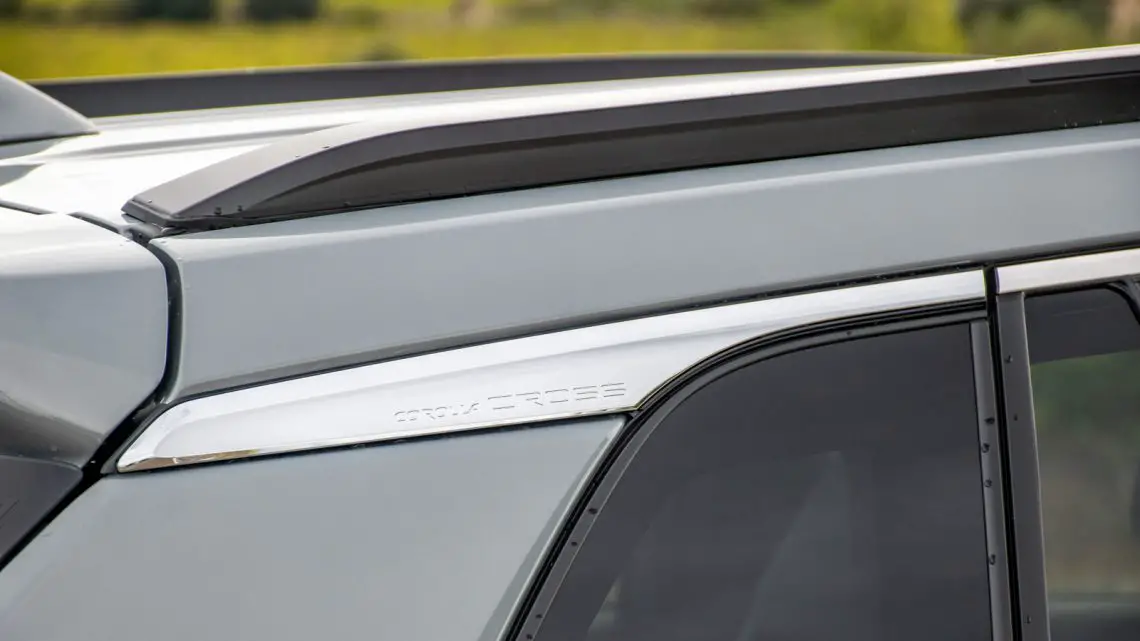
In short, for the base price, you already have a pretty complete car. In addition to the Active, the Corolla Cross also comes as a Dynamic (€40,495), First Edition (€41,995) and Launch Edition (€44,995). With the latter, we were on our way. Then, with perforated leather upholstery, an 8-way power-adjustable driver’s seat, a heatable steering wheel, JBL Premium Audio and a 360-degree parking camera, you really lack nothing.
Conclusion Toyota Corolla Cross
With the Corolla Cross, Toyota has a good offering in the SUV section of the compact midsize. The brand has now sealed every hole in the SUV segment. Perhaps a bit on the late side, but the Japanese prefer to do their homework well before taking action. The Toyota Corolla Cross has its own face, offers just a bit more space than the C-HR and drives quite dynamically without becoming uncomfortable.
A major drawback of the Corolla Cross is its towing weight. This car would have been ideally suited as a caravan puller, but Toyota cannot serve that target market with the Corolla Cross. Don’t have a caravan and are looking for a spacious, fuel-efficient family car? Then the Corolla Cross is definitely not the wrong one for you. Indeed, except for a few criticisms, this is a very well thought-out SUV that impresses in most respects.


